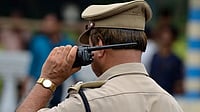Health experts on the occasion of World No Tobacco Day urged the government to ban tobacco advertisements.
While today cigarette packets have mandatory warnings of health concerns of smoking, that was not always the case. For decades, tobacco companies advertised their product as healthy and even featured doctors in their ads.
Not only various company featured doctors in their ads, they also competed with each other and cited figures to show theirs was the most preferred cigarette brand among doctors.
Here we explain the history of such misleading advertisements, how they were stopped, and what experts today say on tobacco advertisements.
How companies advertised tobacco?
The companies used doctors in their ads because people trusted doctors on health issues. Seven-eight decades back, there was no internet for people to directly seek healthcare information, so they trusted doctors and cigarette ads featuring doctors.
Healthcare website Healio notes, "Although the doctors in these advertisements were always actors and not real physicians, the image of the physician permeated cigarette ads for the next two and a half decades [from 1930s in the United States]."
Leading medical journals also published tobacco ads. It was not until 1950s that the prestigious Journal of the American Medical Association (JAMA) banned tobacco ads in its pages. The New England Journal of Medicine, another respected journal, also published tobacco ads for years.
Not only were cigarettes shown as being okay, doctors were also urged to prescribe 'healthier' brands as companies competed to portray theirs as better.
Sky News wrote, "A typical poster from 1930 featured a white-coated medic brandishing a pack of Lucky Strike and the claim '20,679 physicians say Luckies are less irritating'."
Prof. Robert K Jackler of Stanford University Medical Center said, "There were big ad campaigns with hundreds of ads in medical journals. For example, there is an ad showing a physician writing on a prescription pad, 'For your patients with sore throats and cough, Phillip Morris cigarettes'."
How these ads stopped?
It was in 1965 that the tobacco industry was required to put warnings on their product labels.
In 1964, the US Surgeon General Luther Terry announced that a government committee's report found that there was a link between lung cancer and chronic bronchitis and cigarette smoking.
Terry said, "It is the judgement of the committee that cigarette smoking contributes substantially to mortality from certain specific diseases and to the overall death rate."
A study in The New England Journal of Medicine in 1959 suggested a link between smoker numbers and advertising. It found that the number of physicians in Massachusetts who reported being regular smokers declined from 52 per cent in 1954 to 39 per cent in 1959. This was following the beginning of bans on tobacco ads in medical journals.
Cigarettes' sponsorship of cricket
In India and abroad, cigarette advertisements and sponsorships were common for almost 30 years until early 2000s. A popular cigarette brand was even the sponsor of Indian men's national cricket team for a large part of the '90s.
Cricket website Cricket Addictor reported, "Not only were the tri-nation series in Australia named after the brand Benson & Hedges, but the 50-over World Cups of 1992 and 1996 were also sponsored by B&H and Wills.
"As far as the Indian cricket team is concerned, Wills continued to be its prime kit sponsor for a major part of the 1990s- 1993-1996 & 1999-2001."
What experts today say on tobacco ads
Experts have urged the government to promptly ban tobacco advertisements.
Noted epidemiologist and public health expert Chandrakant Lahariya pointed out that children and non-tobacco users too visit the point of sale (POS) and are at risk of getting addicted and giving relaxation on POS is like inviting a tobacco pandemic. He also brought to the notice of the government about the tobacco threat on the people's health in the wake of Covid-19.
He told PTI, "Every life is precious and we are losing 1.3 million Indians every year to tobacco-related diseases. Apart from cancer, tobacco is also a major cause of a wide range of chronic and life-threatening conditions like lung diseases, cardiovascular diseases, and strokes to name a few."
He backed the demand to ban designated smoking areas in the airports, hotels and restaurants, as they were a health risk to non-smokers.
Experts said more than eight million people are killed across the globe every year due to tobacco use. Even cigarette smoking releases 84,000,000 tons of carbon dioxide into the atmosphere. Tobacco smoke emits three different kinds of greenhouse gases.
Dr Ankit Gupta, Managing Director, The Park and Signature Group of Hospitals, said "People are aware of the ill effects of tobacco on health. But that is only one facet. There is a strong need to spread awareness on how tobacco adversely affects the environment. From beginning to end, the tobacco cycle is an overwhelmingly polluting and damaging process.
"Air pollution caused by smoking springs to mind, but damage occurs across the entire supply chain, and is much more complex,"
Dr Uma Kumar of AIIMS, New Delhi, said tobacco companies that make products like cigarettes and gutkha are specifically targeting teenagers and kids.
She said, "They prominently display their advertisements near school and colleges so that they are visible to the impressionable minds. These should be completely banned."
She stressed that it is very important to save the youth from these addictive products and highlighted the harms of passive smoking to non-smokers, especially children and women.
She added, "Doing away with Designated Smoking Areas (DSA) can be a game changer in the direction of health of the vulnerable population and making India's public places 100 per cent smoke-free.
"Tobacco products cause serious ailments like cancer, claiming almost 13 lakh lives in the country. For healthy India, it is critical that tobacco control law and policies are made stronger and implemented effectively."
Communication expert Neelkanth Bakshi also touched upon various anti-tobacco measures taken by the Centre and said Prime Minister Narendra Modi has been very particular about the health of people particularly youth.
He added, "He was the one who made Yoga a mass movement across the world. I am sure that he's aware of the ill-effect of tobacco on the people. The government will certainly sooner or later come out with law to curb the menace caused by these cancer causing products."
Smoking most common way to consume tobacco
Smoking is the most common method of consuming tobacco. The agricultural product is often mixed with additives and then combusted. When the resulting smoke gets inhaled, it causes lung and respiratory issues, experts said.
Dr (Col.) R Ranga Rao of Gurugram's Paras Hospitals said, "It's also linked to 20 different malignancies, hypertension, kidney problems, and other illnesses. Tobacco is, therefore, a health threat in every way.
"It is critical to conduct more public awareness and education campaigns so that people understand that tobacco impairs their health both directly and indirectly."
Dr Shuchin Bajaj, Founder Director, Ujala Cygnus Group of Hospitals said tobacco endemicity is one of the serious health threats in the world.
He added, "The need of the hour is to discourage tobacco consumption. A blanket ban needs to be imposed on tobacco advertising, promotion and sponsorship. Even a tax increase in tobacco products leads to a decrease in the usage."
(With PTI inputs)


























